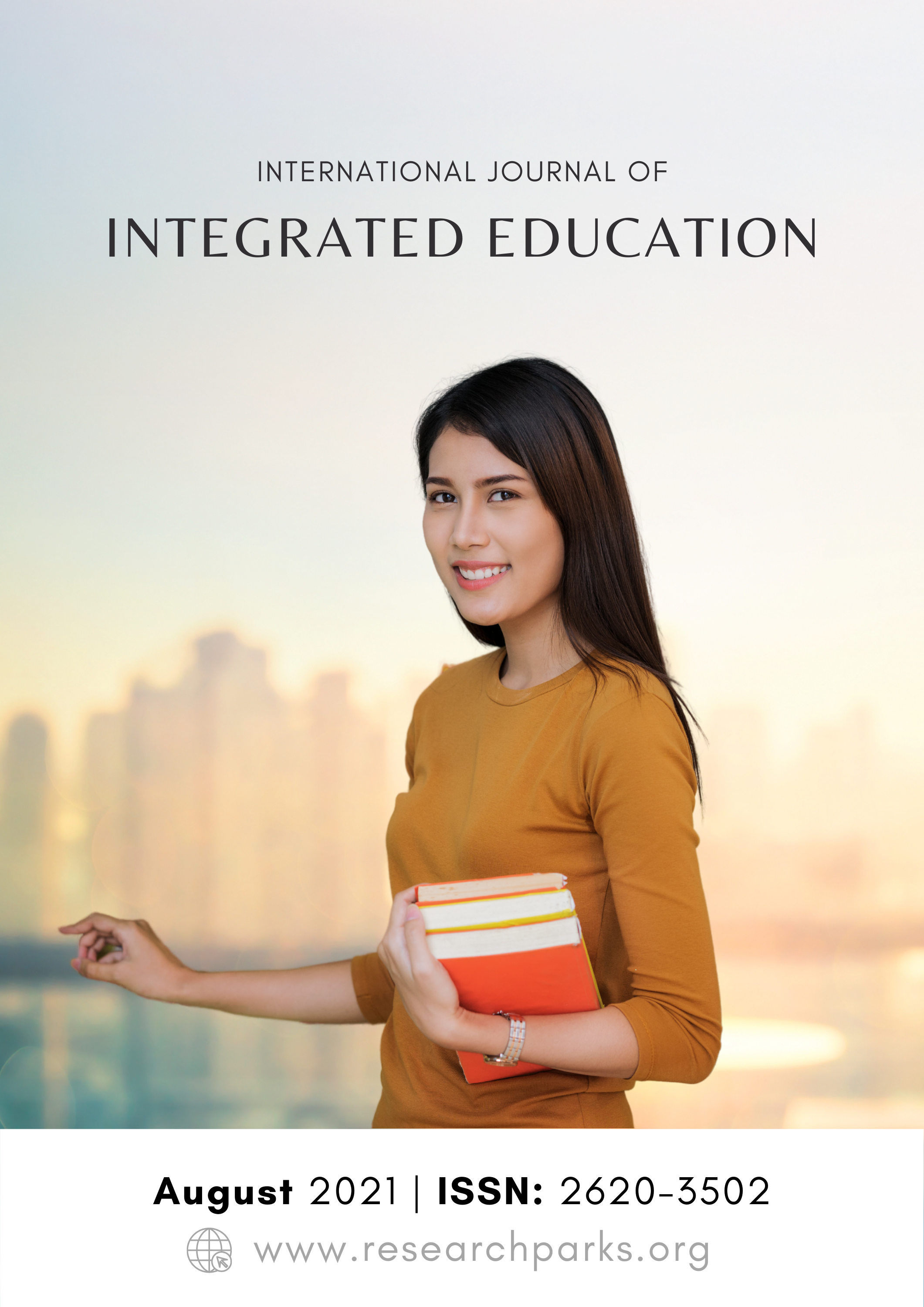Language Interference in Teaching English Diphthongs to Uzbek Learners
Abstract
The interference of vowels in teaching English has been studied on the examples of languages such as Urdu, Russian, and Sundan, in which the causes of the interference of vowels have been revealed. This research is devoted to the problem of linguistic interference in the process of teaching the pronunciation of English diphthongs and their written expressions to Uzbek native speakers. The aim of the study is to identify the interference of diphthongs caused by the interaction of the Uzbek and English languages and develop a method to eliminate them. The comparative-contrastive method has been used to determine the interference of diphthongs. The research distinguishes two types of linguistic interference associated with teaching diphthongs. They are the phonetic-phonological and orthographic interference of diphthongs. The reasons for appearing of these types of interference are explained by convincing examples. The research proposes a new method to eliminate the phonetic-phonological and orthographic interference of diphthongs in teaching English to Uzbek native speakers. This method is called Vowel Spelling and Pronunciation. The application of new method and its advantages are explained in detail. The research is concluded that the use of the Vowel Spelling and Pronunciation method is fruitful in the effective teaching of English diphthongs to the Uzbek audience.
References
2. Radjabov N.N. The Contrastive-Phonological Study of the System of Vocalizm in the English and Uzbek languages. Abstract of the Dissertation of the Doctor of Philosophy (PhD) on Philological Sciences. – Тошкент, – 2018. – 49 р.
3. Teaching English language arts to francophone students, grades 3 to 9: a guide to transfers and interference. Pedagogical Considerations. Copyright © 2001, the Crown in Right of Alberta, as represented by the Minister of Learning. Alberta Learning, French Language Services Branch. Р.30.
4. Абдуазизов А. Ўзбек тили фонологияси ва морфонологияси. 2-нашр. – Т.: Ўқитувчи, 2010. – 172 б.
5. Джусупов М. Звуковые системы русского и казахского языков. Слог. Интерференция. Обучение произношению. – Т.: Фан, 1991. – 239 с.
6. Ишаев А. Ўзбек адабий тилида товуш бирикмалари // Ўзбек тили ва адабиёти. – Т., 1966. №1. – Б. 21-26.
7. Muhammad A. and Hussain A. Problems in Learning and Teaching English Pronunciation in Pakistan // Int. J. of Res. in Linguistics & Lexicography. 2012 Volume 1, Issue 4. Р.43‐48.
8. Раджабов Н.Н. Инглиз ва ўзбек тилларида вокализм системасининг фонологик жиҳатдан чоғиштирма тадқиқи: филол. фан. б-ча фалсафа д-ри дисс. – Тошкент, – 2018. – 170 б.
9. Трегубова Ю.А. Отклонения от произносительных норм английского языка вследствие фонетической интерференции в английской речи русских учащихся (на примере гласных фонем)// Филологические науки. Вопросы теории и практики. – Тамбов: Грамота, 2016. № 6(60): в 3-х ч. Ч. 1. C. 171-173.
10. Трубецкой Н.С. Основы фонологии. 2-го изд. – М.: Аспект Пресс, 2000. – 352 с.
In submitting the manuscript to the International Journal on Integrated Education (IJIE), the authors certify that:
- They are authorized by their co-authors to enter into these arrangements.
- The work described has not been formally published before, except in the form of an abstract or as part of a published lecture, review, thesis, or overlay journal.
- That it is not under consideration for publication elsewhere,
- The publication has been approved by the author(s) and by responsible authorities – tacitly or explicitly – of the institutes where the work has been carried out.
- They secure the right to reproduce any material that has already been published or copyrighted elsewhere.
- They agree to the following license and copyright agreement.
License and Copyright Agreement
Authors who publish with International Journal on Integrated Education (IJIE) agree to the following terms:
Authors retain copyright and grant the International Journal on Integrated Education (IJIE) right of first publication with the work simultaneously licensed under Creative Commons Attribution License (CC BY 4.0) that allows others to share the work with an acknowledgment of the work's authorship and initial publication in this journal.






1.png)
